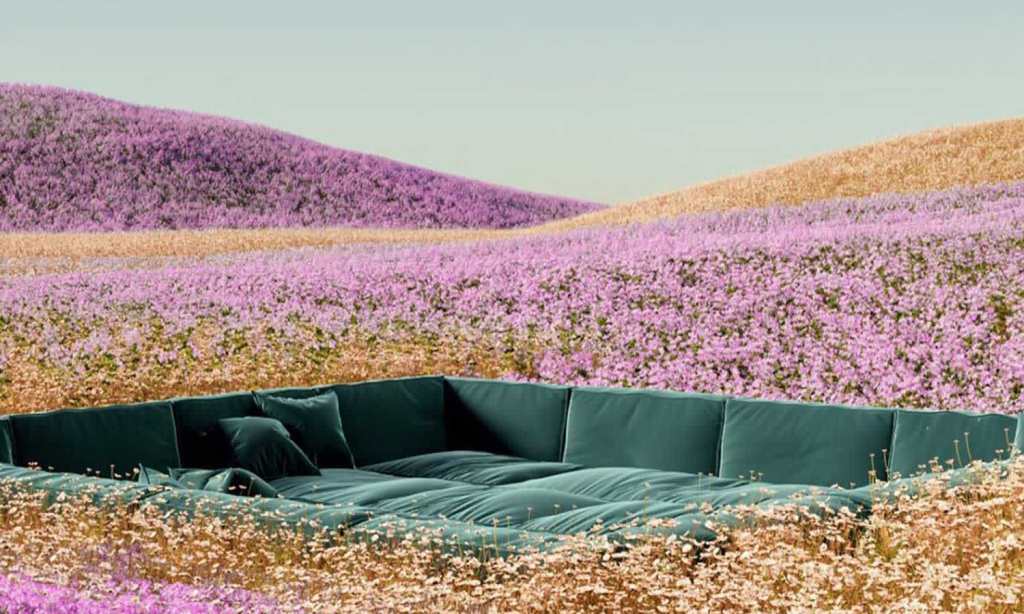Colour has a powerful influence on the way you feel in a space; some hues can put in a spring in your step, boost motivation and up your productivity levels, while others may make you feel lethargic or even upset.
In addition, certain colours can have an impact on your physiological responses, increasing or slowing your heart rate and blinking frequency. It’s not always a bad thing — calming colours that slow your pulse in the bedroom can be favourable to improve sleep.
Right now, it’s normal to feel somewhat distracted, fatigued or stressed by the current climate and the world beyond the four walls of your home, but if you’re experiencing these emotions at an escalated level, then your surroundings, and their colours in particular, could be a contributing factor.
Below, we unpack the benefits and potential downsides to colours in your home.
Red
Red is a passionate and energetic colour that can excite a home’s interior space. While the hue isn’t suitable for every space (read: those you wish to keep calm and quiet), red walls and decor can be useful for boosting energy and bringing passion, drive and motivation.
It’s ideal for a home gym or bedroom — although not a bedroom you intend to sleep in. If you catch our drift.
Orange
Sharing similarities with red, orange is a bright hue that encourages excitement and enthusiasm, plus stimulates the left side of your brain to boost creativity and drive determination, which makes it perfect for your home office.
Since it can be rather garish, the suggestion to use the shade in your home office comes with a caveat. Rather than painting your walls a bright tone of Fanta orange, instead look to include some orange blooms, a vase, or some notepads.
Yellow
A colour associated with happiness, yellow can do well to brighten your mood, but according to Very Well Mind, the colour can have confrontational undertones that increase frustration, anger or aggression.
“While it is considered a cheerful colour, people are more likely to lose their tempers in yellow rooms and babies tend to cry more in yellow rooms.”
We love yellow, but we don’t want to enhance feelings of frustration in rooms where we may naturally be more frustrated, like in an office or study. In the kitchen, however, yellow can bring joy and create a warm atmosphere, and can also be implemented with pops of colour by the way of bright appliances or with a bowl of lemons.
Green
The rumours are true: green is good. In the home, shades of green that reflect those among nature are particularly helpful for creating a calming and soothing effect. As a symbol of that natural world, green helps to create a sense of tranquility, and the good news is you don’t need to paint your walls to feel its effects.
By dotting indoor plants around the space or using pops of calming greens in towels, bedding or with cushions, the same effects can be felt without the commitment to slathering your walls.
Blue
Blue shades can evoke a physiological response in the body to slow heart rate and reduce body temperature. It’s a calming shade that can make a space feel serene and tranquil (ideal for the bedroom and living room) yet not all shades of blue will have the same effects.
For some, blue can bring about morose feelings. For this reason, it’s wise to pick up a few paint samples and try them out before committing to a painting an entire space.
Blue is also not a recommended for the kitchen. The colour is considered fairly unappetizing, and the same is often said about pink.
Purple/Pink
Pale shades of pinks and purples are considered thoughtful, kind and calming. As such, they make for a great base of a kid’s bedroom, adult bedroom, or living room.
The deeper or brighter the shades get, the more complex they can become. Rich, jewel-toned purples, for example, are associated with royalty, making them great for a formal living room. Bright magenta pinks are vibrant in nature and evoke a similar response of romance, inspiration and passion.
Read more stories from TheLatch— and follow us on Facebook.

